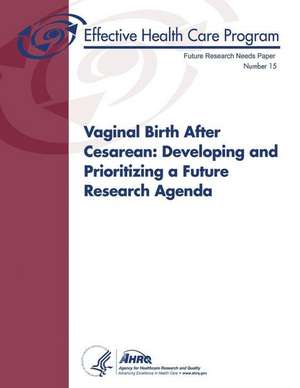Vaginal Birth After Cesarean
Autor U. S. Department of Heal Human Services, Agency for Healthcare Resea And Qualityen Limba Engleză Paperback
| Toate formatele și edițiile | Preț | Express |
|---|---|---|
| Paperback (2) | 103.73 lei 3-5 săpt. | |
| CREATESPACE – | 103.73 lei 3-5 săpt. | |
| CREATESPACE – | 254.32 lei 3-5 săpt. |
Preț: 103.73 lei
Preț vechi: 109.19 lei
-5% Nou
Puncte Express: 156
Preț estimativ în valută:
19.85€ • 20.61$ • 16.55£
19.85€ • 20.61$ • 16.55£
Carte disponibilă
Livrare economică 01-15 martie
Preluare comenzi: 021 569.72.76
Specificații
ISBN-13: 9781499519822
ISBN-10: 1499519826
Pagini: 70
Dimensiuni: 216 x 279 x 4 mm
Greutate: 0.19 kg
Editura: CREATESPACE
ISBN-10: 1499519826
Pagini: 70
Dimensiuni: 216 x 279 x 4 mm
Greutate: 0.19 kg
Editura: CREATESPACE
